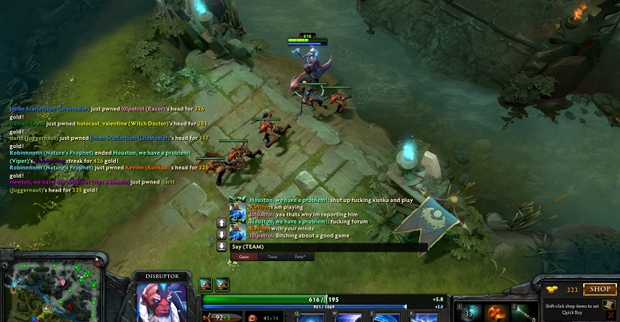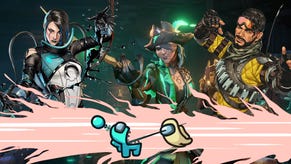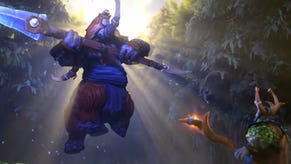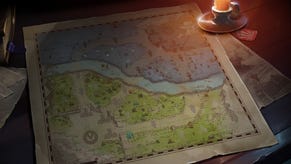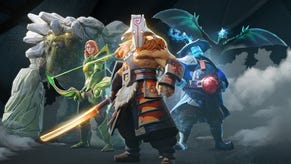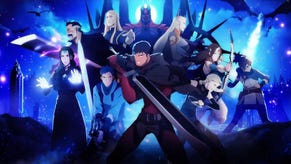Dote Night: Fairness, Tactics And The Poirot Of Esports
All Random All Pip
Part of a miscellany of serious thoughts, animal gifs, and anecdotage from the realm of MOBAs/hero brawlers/lane-pushers/ARTS/tactical wizard-em-ups. One day Pip might even tell you the story of how she bumped into Na'Vi's Dendi at a dessert buffet cart.
"Dota 2 is not about kills, it's not about how many towers you can take, it's about killing the throne. That's the game"
I'm talking to Alliance's manager Kelly Ong Xiao Wei about the "rat Dota" tag you'll often hear applied to her team. I've been thinking about the phrase since I overheard her asking one of the Dota 2 commentators at ESL One to stop using it. Her point is that it's not a neutral term. Rat Dota is also a judgement on the team and it implies they're using an inferior or unworthy playstyle. That's why she's asking the casters to refrain from using it. But the more I think about the problem the more I wonder if there's another solution.
Rat Dota is a style of play heavy on split pushing. Split pushing is where you push your advantage on multiple lanes in the game at once - it's common to see it as part of the flow of play but some heroes and lineups are more geared towards this style. Nature's Prophet is one of the most obvious split push heroes as he can generate extra minions to do damage in lanes and his teleport ability means he can head from lane to lane keeping up the pressure from multiple directions.
With rat Dota you're playing an evasive form of Dota, making extensive use of split pushing and generally staying out of costly team fights. The aim is to gnaw away at enemy towers and push multiple lanes efficiently. When the enemy arrives to defend you scurry away leaving only damaged towers and perhaps a few of Nature's Prophet's treants behind you. It's an exercise in constant pressure, in misdirection of the other team's heroes, in co-ordination and discipline. It's not a spectacular 5v5 mid-lane teamfight, it's a siege.
"Rat Dota was used to describe Fnatic because they used to do a lot," says Kelly. "It's split pushing. Split pushing is not a strategy everyone can execute because it's about experience, it's about decision making and knowing what to do because you put pressure on the enemy so they can't really counter it."
It's a strategy Alliance can also look to when they're behind in a game, staring into a gold or XP abyss. "Sure, it makes a lot of people angry from the way we win but I think the fact you're able to come back from such a huge loss in the game just shows we're better. If it was so easy to do, why doesn't every team play the way we do sometimes? It's not like we only play rat style."
Thinking about why split pushing is considered somehow less virtuous than other types of play leads in several directions. One is that, regardless of how the negativity started, it continues because it's legitimised by casters and other professionals. The "rat" label being applied means that newcomers to pro-Dota will have the strategy introduced to them as a negative thing from the start and then repeated. This is what concerns Kelly.
It's why she wants to change how casters deploy the term, removing it from the general conversation. But Alliance have mixed messaging on this front at the moment. They also toy with embracing the term. One of their official t-shirts actually says "Once you go rat you never go back". They also considered creating a themed rat courier as an in-game item for fun. Admiral Bulldog - the focus of a lot of the ire - tells me "I don't really care so much about it, just embrace it - I'm the rat king or whatever [...] I don't care what they call it." As long as you get the crown? "Yes," he smiles.
Digging deeper into the causes rather than the continuation, split pushing involves map-wide mobility. It involves being where the enemy isn't and nibbling away at defences in preference to explosive fights. How we process interactions is important here. Two digital wizards punching each other in the face has a directness which gets translated as honesty. One digital wizard commandeering a bunch of tree people to smack a building then scarpering before the other digital wizards show up to deliver the aforementioned face-punching is an indirect encounter. It tends to get translated as sneaky or less honest. It gets the 'rat' label.
These translations can build into scrub logic. I'm using the term 'scrub' as David Sirlin defines it - someone who sets up their own series of arbitrary rules about what constitutes good or valid play completely independently of how the game actually works. Split pushing being interpreted as dishonest, as cheap, as dirty falls into this category. If you're playing to win as the pro players do you'll adapt your strategy and do whatever you can to get that title. But when that's happening in front of spectators who have personally ruled that strategy as dishonest you're seen as unsporting.
But the more time I spent thinking about this the more I suspect Dota 2 casting camerawork also plays a big role. Split pushing, as I said before, involves misdirection. You want to keep the enemy's resources concentrated away from the places where you're split pushing. This can mean engaging in a fight elsewhere on the map to create space for the pushing heroes. When this happens the camera tends to go to the conflict and not to the push because there's a far higher likelihood of action, perhaps even a kill. Casters will try hard to keep you informed of action happening elsewhere but it's easy to lose track.
Let's take Alliance's second game against Cloud 9 at the recent ESL One tournament as an example. Towards the end of the game there's a more or less continual fight going on. Bulldog gets killed at the 79:50 mark in-game, instantly buys back and teleports to the mid barracks to continue smashing it apart. He leaves and then returns at 80:30 to finish the job. You don't watch any of this on the ESL stream unless you're tracking his icon on the minimap because the camera is trained on the constant action elsewhere. The first you actually see of it is when the camera pans over to mid after Bulldog is long gone revealing the loss.
It's this kind of moment which can pull the rug out from under spectators. If you support the split pushing team it can be a great reveal, if you don't it's a nasty surprise. Either way it's been happening largely off camera, or at least only intermittently in view. You, as a spectator, haven't been given the chance to follow the full story and so there's a feeling of being short-changed.
The best analogy I can think of is using ITV murder mysteries because everything works better with a murder mystery analogy. Imagine you're watching Poirot. You see almost everything the exacting Belgian sleuth sees and you spend the episode trying to piece together the puzzle just a tiny bit before he does. When you get to the end there's a sense of satisfaction because even if you didn't get there first, you at least watched the whole thing unfold and arrived at the conclusion together. Now imagine you get to the end and Poirot's all like "So the murderer was actually this dude over here who we forgot about til now and who I've been secretly researching the whole time without telling you. I'll have a tisane now please."
Rat Dota camerawork is the badly structured murder mystery of MOBA gaming.
By increasing the camera options for broadcast Dota, spectators could keep a better eye on what's going on all over the map. While the main screen deals with what's happening in a fight an inset camera could follow the otherwise offscreen actions of the Tinker or Nature's Prophet or Phantom Lancer. It would take away some of the extremes of emotion - those 'meanwhile, back at base...' reveals - but, combined with other ways of referring to that style of play, perhaps it's possible to start split pushing against the negativity of rat Dota.


